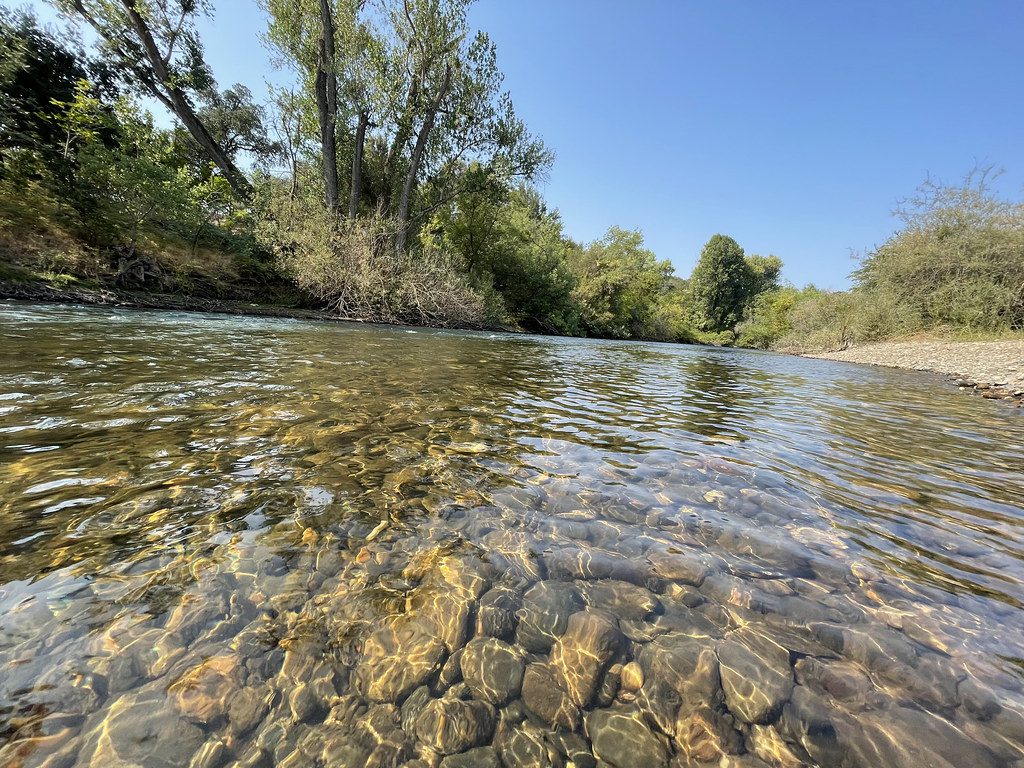Monday November 29, 2021

As rain falls and flows over the landscape, it carries all manner of debris into the watershed – including traces of animals that reside on land. The technique of environmental DNA – or eDNA – is increasingly being used to monitor fish in waterways from bits of genetic material that they leave behind. But given that DNA from so many land-dwelling animals also collects in streams and lakes, a group of researchers from Germany thought that focusing only on fish represents a missed opportunity. The team recently published a study in the journal Metabarcoding and Metagenomics that investigates whether stream water samples can be used to learn about the animals residing both above and under the water (Macher et al. 2021). Their findings suggest that increasing the number of samples collected and expanding analyses to include terrestrial vertebrates could be a powerful means of increasing the value of fish-focused eDNA monitoring.
Fish monitoring programs in rivers, lakes, and oceans around the world are increasingly incorporating eDNA metabarcoding of water samples – a type of analysis that provides information on all the fish species present in a given location. Although not a replacement for physical sampling of fish, eDNA represents a non-invasive, low cost means of gathering data on species richness, and generally provides a more complete picture of the community than traditional sampling. With global biodiversity declining precipitously, there is a need for better data on species occurrence in both aquatic and terrestrial ecosystems, and eDNA has the potential to help achieve this. Although they may be harder to detect, subtle traces of DNA shed by terrestrial animals can also potentially be picked up by the exquisitely sensitive analysis of aquatic eDNA samples. Few studies have assessed how many samples need to be collected to ensure adequate detection of terrestrial animals, which is an important consideration for efficient sampling. To this end, the researchers sought to test the effect of increasing sample numbers, and to investigate the detection of “bycatch,” or DNA from land-dwelling vertebrate species.
In total, the team collected 18, one-liter water samples from a two-kilometer reach of the Mulde River in Germany, which they then processed through eDNA collection filters. Analysis revealed DNA from numerous animals, including fish, mammals, and birds. However, the truly interesting findings were revealed when the researchers explored how increasing the number of water samples affected total species detection among these three groups. While fish showed an increase from an average of 18.8 species detected in one sample to a maximum of 25 species detected among all 18 samples, the mammals and birds showed more dramatic improvements with increasing sample numbers. For mammals, total species detected increased from an average of 5.6 species in one sample to a total of 18 species among all samples, and for birds the average increased from 3.4 species in one sample to a total of 15 species among all samples. In other words, collecting only one sample would have missed only 25% of fish species detected in 18 samples, but would have missed 69 and 77% of mammal and bird species, respectively. The researchers also extrapolated how many more species in each group might be detected if the sample number was doubled, and found that fish species plateaued around 18 samples, but mammal and bird species detections were expected to continue increasing with additional samples collected.
Taken together, these results suggest that the probability of detecting non-fish species varies substantially among samples, and therefore collecting more samples is particularly important for the detection of terrestrial animals. Although bycatch in eDNA surveys is generally disregarded, this study demonstrates that such detections may represent a significant number of species living in the watershed, and evidence of their presence may be relevant to conservation. For example, the study found DNA from multiple protected mammal species including the near-threatened European beaver (Castor fiber), the endangered Eurasian harvest mouse (Micromys minutus), and possibly the critically endangered wolf (Canis lupis). Although detections of non-target species from fish eDNA should be cautiously interpreted due to the potential for false negatives and false positives, the increasing use of eDNA surveys for fish monitoring represents a potential treasure trove of data that extends beyond the banks of the river.
This post featured in our weekly e-newsletter, the Fish Report. You can subscribe to the Fish Report here.
